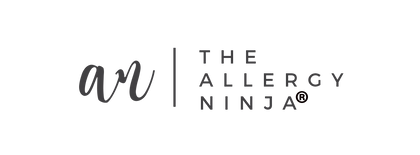
Your child has just settled down at a picnic table to eat her peanut butter sandwich, a side of powder cheese covered snacks, and a cup of that yummy almond milk you’ve recently discovered. There’s a mother on the other side of the picnic area eyeing your kid warily. You glance her way and wonder if she’s silently judging the lack of carrot sticks in your child’s lunch bag. What you don’t realize is this: Yes, she’s taking stock of what your kid is eating, but not because she’s secretly rating your nutritional choices. Her young child has several food allergies and a sense of dread is starting to rise up within her.
Why the Dread?
I’m glad you asked. As your child is eating, his fingers are smudged with peanut butter, something he licks “clean” with a bit of delight. The almond milk splashes a bit on his arm as he’s bouncing around telling you a funny story in that cute animated way of his. The puffy cheese snack color on his fingertips is the same hue of bright orange until he dusts his hands across his jeans. Then he runs off to scurry up the ladder of the swing, leaving traces of peanut, dairy, and tree nuts in his wake.
The mom that’s been watching you is imaging the different scenarios that could play out now. Her daughter, allergic to peanuts and milk, may develop hives when her skin comes into contact with the traces of allergen your child has left behind. Then there’s the reaction that could be triggered when her fingers that slide up the sides of the same ladder are touched to her lips or her eyes. That mom is judging the risk of staying vs. the disappointment of leaving. This isn’t new territory for her. This is her every day: scanning the environment for potential issues and determining the appropriate response.
So, What Can You Do?
Here’s the good news: You can help keep the child in our story safe, as well as all the other allergic children you encounter on a regular basis, with simple hand washing. Make it habit: Any time food is handled, hands get washed. This simple added step will remove the food proteins that trigger a reaction and remove the risk of transferring those proteins to common surfaces that an allergic person may encounter.
But Wait! The Method You Use Matters!
Before you reach for that handy bottle of hand sanitizer and pump a few drops on your hands, let’s back up a moment. Not all handwashing methods effectively remove food proteins. Your hand gel might be good at killing off the bacteria collecting on your hands, but it does a lousy job at removing allergens. In a study by a team at John Hopkins University (published in the Journal of Allergy and Clinical Immunology), antibacterial hand sanitizer left detectable traces of peanut protein on half of the hands tested. Plain water was nearly as useless, leaving about a ¼ of the tested subjects with traces of protein remaining. Conversely, participants that washed their hands with soap and water, as well as those that used commercial hand wipes, had no detectable levels of protein left. In other words, if you can’t find a sink and soap to wash your hands after you eat, a baby wipe will work, but don’t depend on the hand gel.
